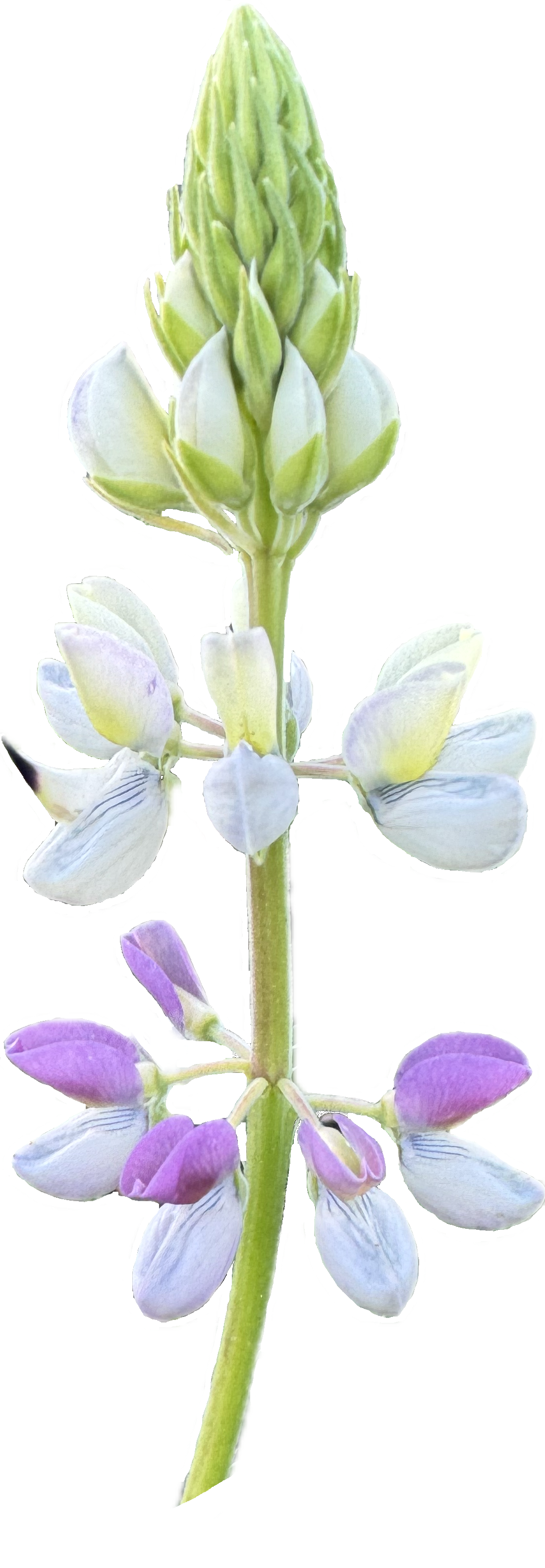

Manycolored Lupine | Lupinus variicolor
Lupinus varicolor, commonly known as Many-colored Lupine, is a perennial herb native to California. It is found primarily along the central and northern coastal regions, thriving in grasslands, coastal scrub, and open woodland areas. This attractive lupine is valued for its showy and variable flowers, which range in shades of violet, purple, blue, and occasionally pink or white, giving rise to its common name. The plant typically forms a leafy mound with palmate leaves, each made up of narrow leaflets with a silvery-green appearance.
Blooming in spring through early summer, Lupinus varicolor adds vibrant color to native gardens and pollinator habitats. Its flowers are highly attractive to bees, butterflies, and other beneficial insects. This species prefers full sun and well-draining soils, including sandy or rocky coastal types, and it is tolerant of dry conditions once established. Like other lupines, it enriches the soil by fixing nitrogen, making it a good companion plant in native landscapes.
Height: 1–2 feet.
Optimum Soil Temperature for Germination: 55F–70F
Blooming Period: March–June
Germination: 15–60 days
Sowing Depth: 1/8–1/4 inch
Packet contains 20 organically grown seeds, untreated, non-GMO.










